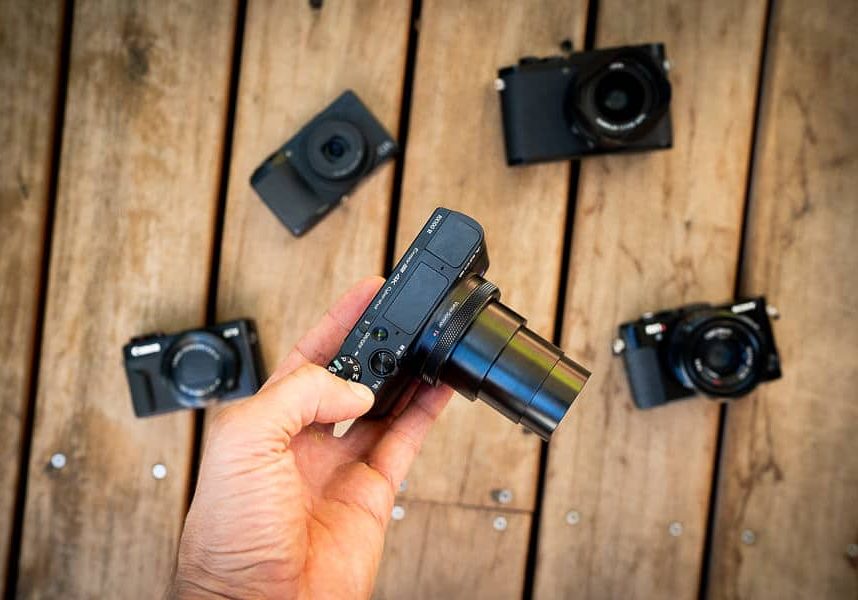
Best Compact Cameras (User Tested Reviews)
Finding the right compact camera isn't easy. It has to be affordable and small, but also with better image quality than your phone! Here are 5 great options.
Camera Gear Guides | Camera Guides | By Greg Cromie | Last Updated: May 23, 2025
Shotkit may earn a commission on affiliate links. Learn more.
In this guide, we’ll get hands-on with the best compact cameras available today!
Compact cameras are much smaller and lighter than enthusiast and pro-level digital camera models.
Yet they still pack a punch with high-resolution image quality and excellent video capabilities.
They’re also an excellent choice for those new to photography or anyone looking to upgrade from smartphone photography.

Impressive performance with a 40.2-megapixel sensor and powerful video capabilities, all packed into a compact yet robust body.
Knowing how to pick out the best camera in a crowded market can be frustrating – that’s why we’re here to cut through the noise and highlight the best of the bunch.
Compact cameras are proving popular choices for travel and family photography and recording videos or vlogs for online content creation.
We will also explain what to look for in a compact camera and how to maximize your photographic experience.
What To Look For In A Compact Camera

Before you head to your local camera store or go online, consider the best features of a compact camera.
Compact camera features are no different from those found in larger cameras – they’re just condensed into smaller form factors.
Sometimes, the need to squish as much as possible into a smaller body results in sacrifices being made in certain places.
One common challenge with compact cameras is finding a battery big enough to power all the bells and whistles.
Here’s a quick guide to the top features to consider when selecting your next compact camera.
Fixed or Interchangeable Lens
Some would argue that a ‘compact camera’ only features a fixed lens (the camera and lens are permanently joined). However, some compact camera models feature interchangeable lenses – the lens can be removed and swapped for another lens.
Lens Focal length
Every camera lens (fixed and interchangeable) has a focal length or focal range. A prime lens has a set focal length that can’t be altered with a zoom function. A zoom lens has a focal range that shifts by operating the camera zoom function or twisting the lens.
For example, a prime 23mm lens offers a set wide-angle view. Meanwhile, an 18-200mm focal range allows you to view wide scenes at 18mm or zoom in on distant objects through to 200mm.
Size & Weight
Compact cameras are small by nature, making them ideal for travel and everyday carry. However, it may be frustrating if you have big hands and a compact camera with a small control system. Consider the size and weight of any camera, or head into a camera store and ask to hold and inspect it first.
Ergonomics
Following on from a camera’s size and weight, consider if the camera is comfortable enough for you to capture photos, record video, or vlog for long durations. Fortunately, some camera brands also offer a detachable hand grip for greater stability and comfort.
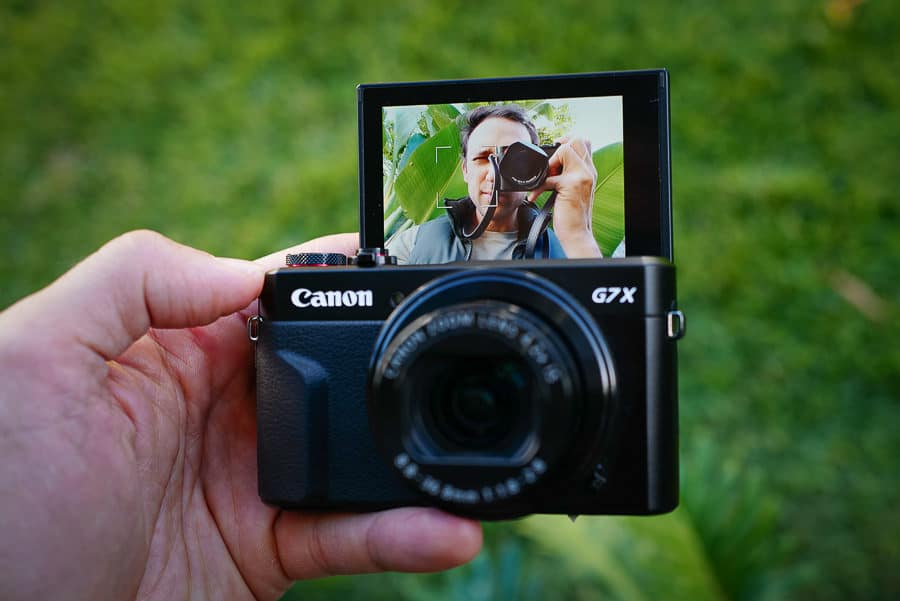
Build Quality
High-quality compact cameras (or any camera, for that matter) are manufactured with durable components to ensure a lifetime of operation. If the camera feels too light for its size, has an excess of flimsy plastic, or rattles, it’s a warning sign that it’s a low-quality offering.
A compact camera should feel durable and sturdy. Some compact cameras feature dedicated shock-proof housing for extreme activities.
Weather Sealing
Another critical element of a camera’s build quality is if it features any level of weather-sealing.
A weather-resistant camera allows you to continue your creative pursuits in dusty, wet, and cold conditions. It doesn’t mean you can take your camera snorkeling with you, but it can certainly endure a little rain or a day at the beach.
Focus Performance
A camera’s focus performance and speed determine how many sharp and in-focus images you capture. If a camera offers poor focus performance, it’ll ‘hunt’ for the subject too long, missing a great shot.
Many compact cameras feature eye, face, and subject tracking to lock onto a person, pet, or vehicle and keep that subject in sharp focus until you take the shot.
Sensor Size & Megapixels
Camera sensors are flat, light-sensitive panels inside the camera. When you press the shutter button, the image sensor is momentarily exposed to light and records all you see. The size and capacity of an image sensor determine how many millions of pixels the camera can record. The more megapixels a sensor has, the higher the image quality and resolution or level of detail.
Low Light Performance
Knowing your compact camera’s low-light capabilities is essential if you intend to use it at night or in dark indoor settings.
Fortunately, digital cameras feature an ISO setting that allows you to improve the sensor’s ability to capture images in low light. For example, a camera’s ISO range can vary from 100 to 12,800.
Higher ISO delivers better low-light performance but can add excessive grain to your images.
Image Stabilization
Digital or mechanical image stabilization helps avoid blurry pictures due to camera movement. It also allows you to capture photos at slower shutter speeds without worrying about your images being out of focus. This feature is also handy when shooting in low-light settings.
RAW Capture
JPEG is the most common digital image format. However, JPEG images only record the surface layer of what the image sensor captures. RAW image files contain much more detail and data from the image sensor. A camera with RAW file options is best if you intend to edit your images to achieve the desired look.
EVF & LCD
All compact digital cameras feature rear LCD panels, which allow users to view images and access menu functions. However, not all cameras feature an Electronic Viewfinder (EVF), a smaller LCD monitor that sits inside an eyepiece. When you bring the camera up to your eye, the EVF displays the scene before you.
Controls
An essential selection criterion for any camera is the control system and menu layout. Some cameras feature manual control dials, allowing you to alter shutter speed, aperture, and ISO. Other cameras require you to control the camera with a menu via a small joystick or touchscreen interface. Keep this in mind and consider the shooting experience you’re after.
Hot Shoe
A hot shoe is a small metal bracket on top of many compact cameras. It also features digital connections, allowing you to connect with and control a range of accessories.
Typical hot-shoe accessories include a speedlight or flash and an external microphone for video recording. Some cameras feature a cold shoe mount to which you can attach accessories, but there’s no digital interface.
Battery Life
Every camera specification sheet includes the estimated battery life for photography and videography. An industry standard ensures these figures are represented accurately and consistently.
A compact camera battery will last between 300 and 4oo images and around 30-45 minutes of HD or 4K video recording.
Available Accessories
If you’re the sort of visual creative who loves to customize your gadgets, you’re in luck! There’s a wide range of accessories to optimize your camera’s performance and comfort. Alternatively, if you’re all about the bling, there are endless possibilities to make your mark.
Value For Money
There’s a compact digital camera to meet every possible budget. However, when you buy cheap, you get cheap outcomes and performance. The flip side of that is paying too much for a compact camera because it comes from a prestigious brand. My advice is to thoroughly research the available cameras within your budget range.
The Best Compact Cameras
Now that you know what to look for in a compact camera, let’s look at some of the best options available today.
We’ve selected a range of compact cameras from leading brands that offer excellent features, performance, build quality, image resolution, and video output.
Our selected cameras come from brands with extensive industry experience and are backed by consumer confidence.
Many of the best compact cameras feature performance and output plucked straight out of some of the best enthusiast-level digital cameras on the market.
Fujifilm X100 VI
Sensor: 40.2MP X-Trans CMOS 5 HR 23.5×15.6mm (APS-C)
Lens: 23mm f/2 (35mm full frame)
Dimensions: 128 × 75 × 55mm (5.04 × 2.95 × 2.17″)
Weight: 521g (1.15lb)
- High-resolution 40.2MP image sensor
- 5-axis image stabilisation
- Powerful X Processor 5
- Stunning hybrid OVF/EVF
- Fixed 23mm f/2 Fujinon lens
- 20 Fuji film simulations
- Retro film camera styling
- 6K 30p video recording
- Not 100% weather-sealed
- No UHS-II fast SD card slot
- Backorders and long waits
Having been in the business for over 90 years, Fujifilm is a trusted brand in the photography industry.
The original Fujifilm X100, released in 2011, was the first X Series camera and signaled the beginning of a new age of mirrorless camera technology.
The Fujifilm X100 VI is today’s most popular, powerful, and sought-after compact camera.
The X100 VI retains the classic rangefinder styling and appeal of the original X100 model—but with far more oomph!
Available in all black and silver/black, the X100 VI is one of the larger compact cameras at 128×75×55mm (5.04×2.95×2.17) and weighing 521g (1.15lb).
However, when you first pick up the Fuji powerhouse, you realize it’s incredibly solid and robust and will likely double as a doorstop in days to come.
True to the Fuji design ethos, the VI features a single large command dial for manual control over shutter speed and ISO.
With the command dial pressed down, you can quickly adjust the shutter speed, and with it raised, you can select ISO—ingeniously simple.
The top plate also features an exposure compensation dial and a hot shoe with a flush cover.
At the rear of the Fuji X100 VI, a 3″ 1.620K tilting touch screen allows shooting from low to high, and touch screen gestures control vital settings and features.
The VI also features a unique hybrid optical and electronic viewfinder.
Your live view is displayed in EVF mode on a 3.690K dot LCD monitor. Flip the front level, and the EVF drops away to reveal the optical viewfinder, allowing you a natural view of the scene before you.
The Fujifilm X100 VI features a bright and sharp fixed Fujinon XF 23mm f/2 II lens that delivers a 35mm full frame equivalent and natural field of view.
With faster autofocus and image sharpness, the fixed 23mm lens is an upgrade over earlier X100 models.
What’s most impressive about the X100 VI is its flagship-level 40.2MP X Trans 5 CMOS image sensor, 5-axis in-body image stabilization, and powerhouse X Trans 5 processor. It boasts the same sensor, image stabilization, and processor as the flagship Fuji X-T5!
Putting aside the impressive spec list, the Fujifilm X100 VI produces exceptional image quality with excellent dynamic range and resolution.
Moreover, every Fuji camera includes film simulations that replicate the look and appeal of classic film stock.
The X100 VI packs 19 film simulations that act like filters to color your world. It was one of my favorite cameras to review.
While the Fuji is an excellent compact camera for still photography, it also boasts impressive video recording options.
Combining the power of the X Trans sensor and X Processor, the VI records 6K video at up to 30p and 4K up to 60p.
While the camera only supports UHS-I speed SD cards, it’s still an impressive result.
Another odd design choice by Fuji is the incomplete weather sealing.
The camera body is fully weather-sealed; however, the front of the fixed 23mm lens isn’t. To achieve total weather sealing, you must buy a lens ring with a clear filter.
Fuji’s X100 range has always been high on the list for many street and travel photographers. Howver, given its impressive spec sheet, it’s a brilliant camera for a wide range of photography and video genres.
The X100 VI retails for around US$1,940. Considering the flagship features, incredible output, stylish design, and overall usability, it’s good value for money.
One of the biggest disappointments with the X100 VI is finding available stock in-store or online.
When the camera launched in early 2024, it immediately sold out and overwhelmed Fuji’s ability to manufacture and ship enough to meet demand.
There are still some stock shortages in various regions; however, I’d recommend tracking down an earlier generation X100, such as the V or IV.
Ricoh GR III & GR III X
Sensor: 24.24MP CMOS 23.5 x 15.6mm (APS-C)
Lens: 18.3mm f/2.8 (28mm full frame) or 26.1mm f/2.8 (40mm full frame)
Dimensions: 109.4×61.9 ×33.2mm (4.31 x 2.44 x 1.31″)
Weight: 257g (0.57lb)
- Ultra-compact and lightweight
- Choice of 18.3mm or 26.1mm fixed lens
- Excellent street-style camera
- Sensor-shift shake reduction
- Comfortable grip
- Just as many stock shortages as the Fuji
- Multiple GR III models to choose from
- Poor battery performance at 200 shots
- Non-tilting touch screen
- No EVF
- Next to no weather-sealing
Ricoh GR III
Ricoh GR III X
Ricoh is the unsung hero of the compact camera world with an almost cult-like following of the GR series.
The Ricoh Imaging Company (and its subsidiary Pentax) have a long and reputable history as a film and digital camera manufacturer.
In its many forms, the Ricoh GR III is the culmination of decades of experience developing premium compact cameras.
Ricoh’s current generation of GR is available as the standard GR III, GR III HDF, GR III X, and GR III HDF.
It’s a confusing platform, and while having many variations of the same camera is great, it’s hard to find any available anywhere.
The ‘standard’ Ricoh GR III model features an 18.3mm f/2.8 (28mm full-frame) wide-angle lens, ideal for various day-to-day shoots.
The GR III HDF model is identical except for an additional HightLight Diffusion Filter (HDF) to mitigate overexposure.
In recent years, Ricoh added a second (or third?) model to the series: the GR III X and, of course, a GR III X HDF.
The X models feature a 26.1mm f/2.8 (40mm full frame) lens with a narrower field of view. Everything else is the same as the non-X models.
Whether you choose the 18.3mm (28mm full frame) GR III or 26.1mm (40mm full frame) GR III X, the lens offers fast focus performance and a bright f/2.8 maximum aperture.
Ricoh also offers the GR series in a range of limited styles to muddy the waters even more.
It includes the Diary Edition with a silver finish, the Urban Edition with a navy blue lens ring, and the Street Edition with a metallic finish and an orange lens ring.
While I’m all for special editions, there are now seven Ricoh GR compact cameras in total!
Each model features the same control layout, menu system, processor, and 24.24MP CMOS (APS-C) image sensor.
All GR III models have the same minimalistic and futuristic design with premium plastic and alloy construction.
The front of the camera features a protruding grip, and the top plate houses a hot shoe, wide shutter button, and single command dial.
While the GR III doesn’t feature an EVF, it does offer a 3″ TFT color LCD with around 1037K dots of image resolution. It’s not overly bright and punchy, but it gets the job done.
One gripe I have with the LCD is its fixed flush against the camera’s rear.
Given the low resolution, shooting from the hip or up high is challenging without being able to angle the screen to suit your view.
The GR III measures 109.4×61.9 ×33.2mm (4.31 x 2.44 x 1.31″) and weighs 257g (0.57lb), while the GR III X measures 109.4×61.9 ×35.2mm (4.31 x 2.44 x 1.39″) and 262g (0.58lb)—minimal stuff.
Regardless of the GR model, they’re incredibly compact and lightweight and easily slide into your back pocket.
The fixed front lens sits flush behind sliding curtains. When powered on, the curtains part and the lens powers out from the body.
At 109.4×61.9 ×33.2mm, the Ricoh is a tiny camera; anyone with large hands or fingers will struggle to master it.
The control dials and buttons are equally small and fiddly to access or manipulate.
However, the compact GR III range offers a true point-and-shoot experience thanks to Ricoh’s clever thinking.
Moreover, each GR III includes a handy Snap Focus mode that allows you to set a focus distance from 1m to 5m and on to infinity.
It’s an excellent tool for replacing manual focus and has proven popular among street photographers who run and gun.
Another neat feature packed into such a tiny camera is the 3-axis sensor-shift shake reduction—its purpose is in the name!
Given the multitude of GR models, the pricing is a little messy (but here goes!)
The standard GR III retails for around US$1,000, and the GR III HDF retails for around US$1,200.
As for the X models with the 26.1mm lens, the GR III X retails for around US$1,100, while the GR III X HDF tops the charts at around US$1,300.
The special editions usually cost around US$65 more than the standard retail price.
It’s difficult to determine whether the Ricoh GR III range is good value for money. While the standard edition retails for almost half the price of the Fuji X100 VI, its feature specs are still somewhat limited.
Having said that, the GR III (add X, HDF, etc.) is incredibly popular amongst the street photography community.
They’re incredibly discreet, offer a simple (if somewhat pared back) control system, and produce excellent image quality.
Leica Q3
Sensor: 60MP BSI CMOS 36 x 24mm (Full-Frame)
Lens: Summilux 28mm f/1.7 or 40mm f/2 full frame
Dimensions: 130 x 80.3 x 92.6mm (5.12″ x 3.16″ x 3.65″)
Weight: 743g (1.64lb)
- Outstanding 60MP image resolution
- Robust build quality
- Stunning Summilux 28mm f/1.7 lens
- Stunning Summilux 40mm f/2 option
- Classic styling and weather-sealed
- It’s price is out of most people’s reach
- Huge RAW file sizes
- Take out insurance!
Founded in 1869, the Leica camera brand and company is one of the oldest in the business.
Leica developed rangefinder-style film cameras, with the first becoming commercially available in the mid-1920s.
Known for premium build quality and superior optical glass, Leica cameras have become some of the most sought-after.
Today, the classic rangefinder styling is still applied to current-generation Leica cameras. The same build and optical quality remain, but that level of prestige comes at a cost.
The Leica Q3 launched in mid-2023 with beefed-up performance to replace the popular Leica Q2 models.
Leica’s Q3 is one of the slickest-looking compact cameras on the market – but it’s also one of the biggest.
It measures 130 x 80.3 x 92.6mm (5.12″ x 3.16″ x 3.65″) and weighs a hefty 743g (1.64lb).
The weather-resistant Q3 is one of the most robust and durable cameras thanks to its premium magnesium die-cast housing and leather body wrap.
The front of the Leica Q3 is incredibly minimal, with only the fixed lens and the Leica Red Dot branding – that Red Dot adds significantly to the cost.
The Q3’s rear features a stunningly bright 5.76M dot resolution, 120 fps EVF, and a 0.79x magnification.
It’s an incredible experience to compose any shot with such a fantastic EVF.
Beyond that, the rear of the Q3 features a 3” TFT LCD with 1.84 dots of image resolution. For those who love to shoot from the hip or down low, the LCD tilts up and down by around 45º.
While the Q3 features a slick form without a hint of a front grip, the rear housing has a thumb-sized indent for greater comfort and support.
The rear houses minimal menu and feature buttons, and a multi-directional pad for menu control.
The Q3 top plate is equally minimal and stylish. It has a hot shoe, a single shutter speed dial, and a customizable command dial. Beyond that, there’s the on/off toggle with the inset shutter release.
Leica is renowned for its optical engineering and sharpness of lenses.
The Q3 boasts a fixed Leica Summilux 28mm f/1.7 ASPH lens with an internal assembly of 11 lenses in 9 segments, including three aspherical lens surfaces.
True to Leica tradition, the lens has exceptional build quality and includes tabs to control aperture and focus.
The Leica Q3 is a full-frame compact camera featuring a whopping 60.3MP CMOS sensor and a Leica Maestro IV processor.
As a result, image quality and color reproduction are sublime thanks to the 9520 x 6336 pixels resolution.
A neat feature of the Leica is that it packs 8GB of internal memory to support the camera buffer and handle 60MP files.
The Q3 also boasts a single UHS-II card slot for fast file transfer in photography and video.
Speaking of video, the Q3 can record 8K 29.97p 4:2:2 10-bit internal and 4K 60p with the added benefit of digital stabilization.
While the Leica Q3 is a heavy compact camera, the overall quality and experience of shooting with the camera and lens combo are undeniable.
The images are super sharp, with a gorgeous depth of field and background blur. However, focus performance is slow and not up to the same standard as other cameras in this category.
It would be easy to recommend the Leica Q3 if it were priced similarly or even slightly higher than the Fujifilm X100 VI. After all, the Q3 is full-frame and boasts a 60MP image sensor.
However, the Leica Q3, with its 28mm f/1.7 fixed lens, is priced three to four times more than a single X100 VI.
The Leica Q3 is a premium compact camera that retails for around US$6300.
That little red dot on the front of the Q3—or any other Leica—multiplies the price, making it out of reach for most people.
A friend of mine likens the Lecia Q3 to a fine Rolex watch – they’re not for everyone, but if you have the money, why not? Check out our review and decide for yourself!
The Leica Q3 is an ideal compact camera for do-it-all photography and videography, perfect for travel and street photography.
It’s also worth pointing out that Leica has announced a second Q3 model – the Lecia Q3 43. It’s almost identical to the original Q3; however, instead of the Summilux 28mm f/1.7 lens, it features a Summicron 43mm f/2.
Sony RX100 VII
Sensor: 20.1MP 1.0-type Exmor RS CMOS 13.2 x 8.8mm
Lens: ZEISS Vario-Sonnar T* 24-200mm f/2.8-4.5
Dimensions: 101.6 x 58.1 x 42.8mm (4 x 2.29 x 1.69″)
Weight: 302g (0.67lb)
- Sharp ZEISS Vario-Sonnar T zoom lens
- Flexible 8x optical and 16x digital zoom
- Lens image stabilization
- Super compact and lightweight
- Excellent travel camera
- Bright EVF for such a tiny camera
- Lack of weather sealing
- Less than premium plastic feel
- Fiddly controls and EVF
- No hot shoe
Sony is among the most recognizable household names for premium consumer electronics, including stereos, televisions, phones, and cameras.
The Sony Cybershot range appeared in 1996 with the peculiar Sony DSC-F1 and its 180º rotating lens system.
My first digital compact camera was one of the earlier Sony Cybershot DCS-P models, which was state-of-the-art at the time.
The first Sony RX100 model was launched in 2012 and proved to be an impressively optimized compact camera.
The Sony Cybershot RX100 VII continues the tradition of excellent compact cameras.
The RX100 VII is a high-spec compact camera measuring 101.6 x 58.1 x 42.8mm (4 x 2.29 x 1.69″) and weighing just 302g (0.67lb).
It’s one of this class’s most petite compact options, making it a perfect travel camera or tool for creating online content.
The overall style of the Sony is sleek and slick. The front of the compact camera houses the Zeiss power zoom lens—more on that in a minute.
The rear of the VII has a 3″ 180º upward tilting touch screen, ideal for selfies and vlogging.
However, it should be noted that the camera’s small size impacts the scale and usability of controls and features.
Unfortunately, the low-resolution 921K-dot screen struggles to be relevant in bright and sunny conditions.
The remaining rear panel space houses a tiny thumb rest, four function buttons, a control dial, and a handy video button.
As for the top plate, the attention to detail and industrial design principles is sublime.
A single PASM command dial allows quick access to all settings, and the shutter button also features a power zoom toggle.
Hidden within the top plate is a pop-up EVF and a separate pop-up flash.
While the EVF is fiddly to handle (as are all the buttons and dials), it features a respectable 0.39″ OLED panel cranking out 2.36M dots of resolution and a 0.59x magnification.
The lackluster rear 3″ LCD panel can almost be forgiven!
The standout feature of the RX100 VII is the ZEISS Vario-Sonnar T* power zoom lens, which expands considerably when in operation.
It boasts a staggering 24-200mm full frame equivalent focal range and an f/2.8-4 max aperture.
When powered down, the 8x optical zoom lens compresses to a compact pancake form.
The operation’s brains are a 20.1MP 1.0″ (13.2mm x 8.8mm) Exmor RS CMOS sensor and a BIONZ X processing engine.
Sony’s BIONZ X processor drives optical image stabilization, the Fast Hybrid 357-point phase/425-point contrast detection autofocus system, and accurate eye and object tracking.
The Sony RX100 VII produces clear, sharp images throughout the 24-200mm focal range with excellent color accuracy.
Regarding video recording, the VII records high res 4K 30p with HLG and S-Log3 to the single UHS-I SD card slot.
If you’re looking for a compact powerhouse ideal for holiday adventures or content creation, the Sony RX 100 VII is ideal.
However, if you have big hands and fingers, you will struggle to master the minuscule interface and pop-up EVF.
It’s also disappointing that Sony didn’t add a hot shoe to the VII, especially since they added a dedicated Mic port.
As our full review shows, Sony’s RX100 VII offers some of the best value for money in a feature-packed compact camera.
It retails for around US$1,300 – a great price for a compact camera with a 200mm zoom!
An excellent alternative to the RX100 VII is Sony’s ZV-1 II. It’s a video and vlog-centric compact camera packing a 20.1MP 1.0-type Exmor RS CMOS sensor.
The ZV-1 II features a wide 18-50mm full frame equivalent lens with a f/1.8-4 maximum aperture.
Sony’s compact vlog camera captures pristine 4K 30p with 4:2:0 8-bit internal recording and a neat Cinematic Vlog mode.
The Sony ZV-1 II is even more affordable, with a retail price of around US$900.
Canon Powershot G7X III
Sensor: 20.1MP 1.0 Type BSI Stacked CMOS
Lens: 8.8–36.8mm f/1.8-2.8 (24–100mm full frame)
Dimensions: 105.5 x 60.9 x 41.4mm (4.15 x 2.4 x 1.63″)
Weight: 304g (0.67lb)
- Pocketable size and weight
- Flexible zoom range
- Budget-friendly option
- The body is not weather-sealed
- Limited battery life
- Low-resolution LCD
- No EVF
Founded in Tokyo, Japan, in 1937, Canon is another reputable camera industry brand.
Canon is renowned for innovating and developing high-end pro-grade film SLRs, DSLRs, and, more recently, their full-frame R series mirrorless cameras.
The company has consistently developed a wide range of cameras to support every level of photography, from entry-level to pro-photojournalism.
The Canon PowerShot range commenced in 1996 with the PowerShot 600 – Canon’s first digital stills camera.
A lot can change in three decades, yet the PowerShot series lives on and offers some of the best budget-friendly compact cameras.
The Canon PowerShot G7X III is the third generation of the popular G7X range, launched in 2014 to compete with Sony’s RX100 range.
Available in black and silver, the G7X III is compact at 105.5 x 60.9 x 41.4mm (4.15 x 2.4 x 1.63) and weighs a lightweight 304g (0.67lb).
Its size and slightly organic form make it an easy compact camera to pocket or slip into a bag pocket.
Similar in appearance to the Sony RX100 VII, the front of the Canon offers a more comfortable grip and a fixed lens.
The rear of the G7X III features a 3″ 180º upward tilting, 1.04M dot resolution touch screen.
Unfortunately, the Canon doesn’t feature an EVF, so you must maximize the low-res rear screen.
Next to the screen is a nearly identical button layout to that found on the Sony RX100 VII – the two brands are still in competition.
The G7X’s top plate offers a spring-loaded pop-up flash, a shutter/zoom toggle combo, and a neat function dial with a built-in exposure compensation ring.
It’s slick and neat, but the small controls may challenge some photographers.
The 20.2MP 1.0″ stacked CMOS sensor manages image quality, and the Canon Digic8 processor handles performance.
Canon’s tiny G7X III also boasts intelligent image stabilization with 5-axis Dynamic IS for slow shutter speed and video capture.
The G7X can only record 4K 30p or silky smooth HD at 120p – but for the price, it’s great.
As for image quality, the Canon features a 24-100mm full frame equivalent focal range and an impressive f/1.8-2.8 maximum aperture.
The 4.2x optical zoom neatly compresses into the front of the camera for a slimline form.
It’s not especially fast and a little loud when it powers on, but it offers an excellent focal range to cover most everyday situations and events.
As with the Sony RX100, the Canon handles well, provided you can work with the minuscule controls, buttons, and low-resolution screen.
And the 180º flip-up screen makes it ideal for vlog-style video and selfie photography.
It’s a great, affordable compact camera to throw into your everyday bag and always have with you.
The G7X III, available in all black or black/silver, retails for around US$800. Be sure to check out our full review here.
How To Make The Most Of Your Compact Camera
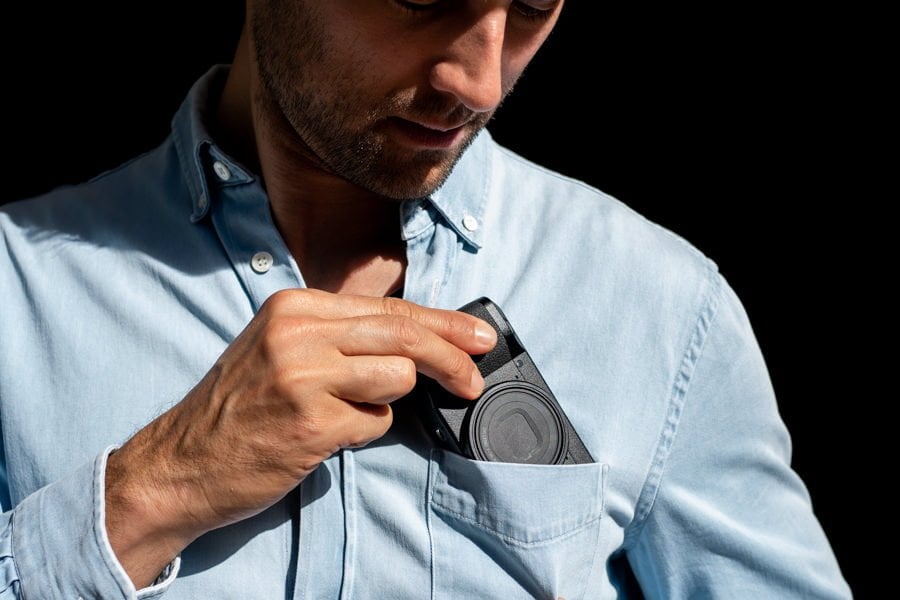
Travel
Travel is one of the best opportunities to get out and about with a camera at all times. Given the often pocketable size of a compact camera, take it everywhere to document your journey, moments, and experiences.
Carrying a big, heavy DSLR or mirrorless camera and a bag of lenses on holiday can be limiting. While you’ll have the best gear for the job, you also have to carry it everywhere and worry about carry-on luggage limits and the security of your kit.
A compact camera takes up no room and is easily tucked away. Many compact cameras feature an optical or digital zoom, allowing you to capture a wide range of still images and video content.
Street
Street photography is a popular genre as it allows visual creatives to document the world around them and how people interact.
While it’s possible to photograph street scenes with a larger camera and lens combo, they’re less discreet than a compact model.
With a compact fixed-lens camera, you look more like a tourist than a local chasing compelling street scenes to call art. Some compact cameras are among the most popular current-generation street photography systems.
Documenting Family Moments
We’ve all become trained to think a smartphone is the best way to capture family moments and activities. The truth is that smartphones can only achieve so much, and you’re far better off with a high-quality compact camera.
Most compact cameras feature high-resolution image sensors, excellent low-light performance, and dedicated processors.
Always having a compact camera on hand is the ultimate way to document everything from the first steps to an 18th birthday celebration and beyond.
EDC
A high-quality compact camera is best for an everyday carry (EDC) camera.
Since they’re small and lightweight, you can fit a compact camera in your daily commute backpack or sling. That way, on your way to or from work, the gym, shopping, or the pub, you can see a stunning moment and take a shot of it.
Compact cameras fit perfectly with the EDC lifestyle of carrying essential items only.
Essential Accessories
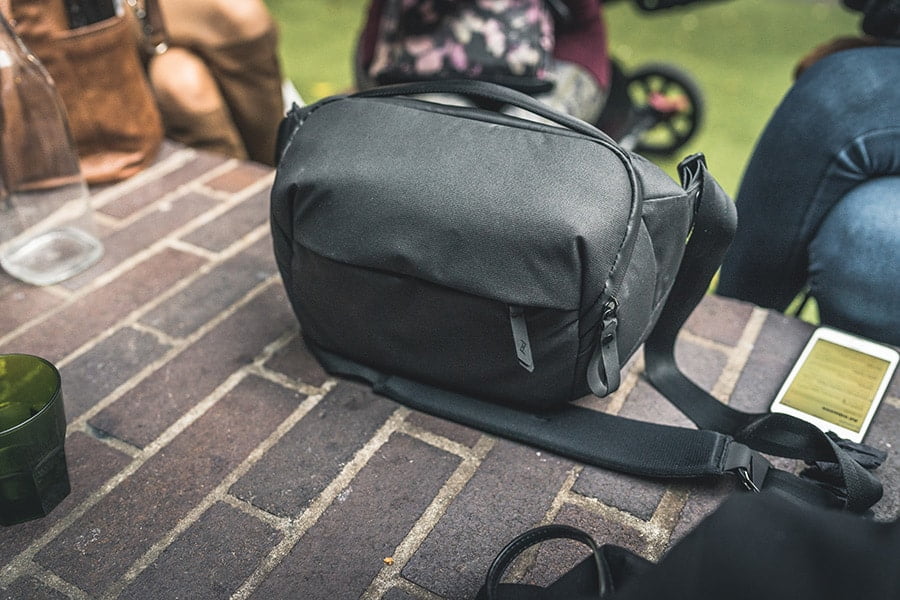
Now that you’ve decided on the best compact camera for your next creative journey, it’s time to accessorize.
Regardless of your camera’s intended use, picking up a few essential items can enhance your experience, comfort, and output.
I don’t recommend adding all the items below to your cart simultaneously.
Take the time to get to know your camera and understand what accessories you need to expand your experience.
Spare battery
While compact camera batteries perform excellently and consume little power, they typically use a smaller battery. It’s always best to pick up at least one spare battery for your camera bag. That way, you know you have a backup if you’re traveling or out for the day.
Cleaning cloth or kit
Regardless of the size or cost of your camera, you must always pack at least a lens cleaning cloth. Avoid using tissues or the corner of your shirt to keep your camera lens dust-free. A simple microfiber cleaning cloth (available at all camera stores) lets you clean your lens or rear LCD without scratching the surface.
Spare SD card
When buying your new compact camera, grab two high-quality SD or Micro SD cards. While having a high-capacity 128GB SD card is excellent, packing a spare ensures you never run out of memory or miss a moment. Recording video on your camera will consume a lot of memory space and battery power.
Comfortable neck or wrist strap
Most compact cameras will include a flimsy wrist strap in the box. Ditch that strap and invest in a high-quality neck or wrist strap to ensure optimal comfort. A camera strap is a simple way to personalize your camera and add a layer of protection and comfort.
Camera bag or a carry pouch
One of the most significant benefits of a compact camera is that it takes up little space in a bag or jacket pocket. However, keep your camera safe and avoid accidental damage in a dedicated camera bag with your additional accessories. Alternatively, buy a padded camera pouch that you can tuck into your everyday carry bag.
Microphone
While most compact cameras feature built-in microphones, it’s worth considering picking up an additional microphone if you intend to record videos. An external microphone slots into the camera’s hot shoe (if it has one) and features a cable to plug into a 2.5mm or 3.5mm mic port. Check your camera specifications to ensure it can support an external microphone.
Compact tripod or grip
Depending on the style of photography or videography you’ll capture with your compact camera, a portable tripod, gimbal, or hand grip can add a lot of comfort. Many brands develop dedicated hand grips to attach to the base of the camera body. The accessory ensures optimal stability when capturing video or images at a slower shutter speed.
Final Thoughts
Compact cameras are an excellent alternative to carrying a larger, heavier, interchangeable lens camera.
Furthermore, compact cameras are catching up to some of their bigger counterparts thanks to improved technology and performance.
Cameras like the Leica Q3 and Fujifilm X100 VI boast high-end processors and sensors that deliver class-leading image output.
Smaller models like the Sony RX100 VII or the Canon G7X III offer greater flexibility in a pocketable camera.
Given the quality, performance, and output of the above compact cameras, it’s a great time to be in the market for one.
Thanks to social media trends and the power of influencers, compact cameras are proving to be excellent choices for quick, on-the-go content creation.
The size, weight, portability, and output of most compact cameras place the joy of photography in your hands.

Impressive performance with a 40.2-megapixel sensor and powerful video capabilities, all packed into a compact yet robust body.






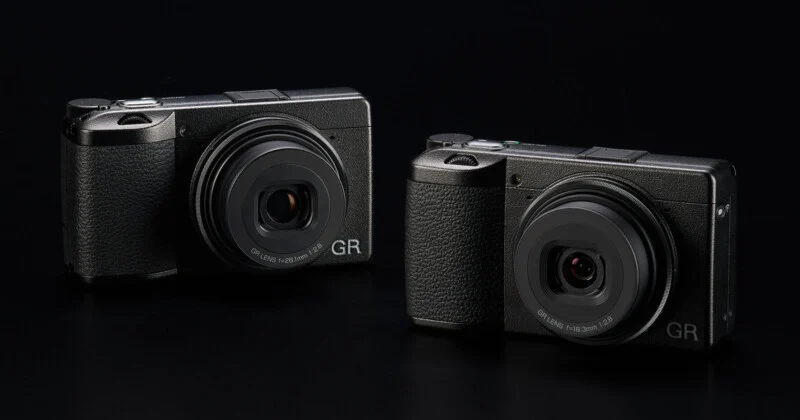

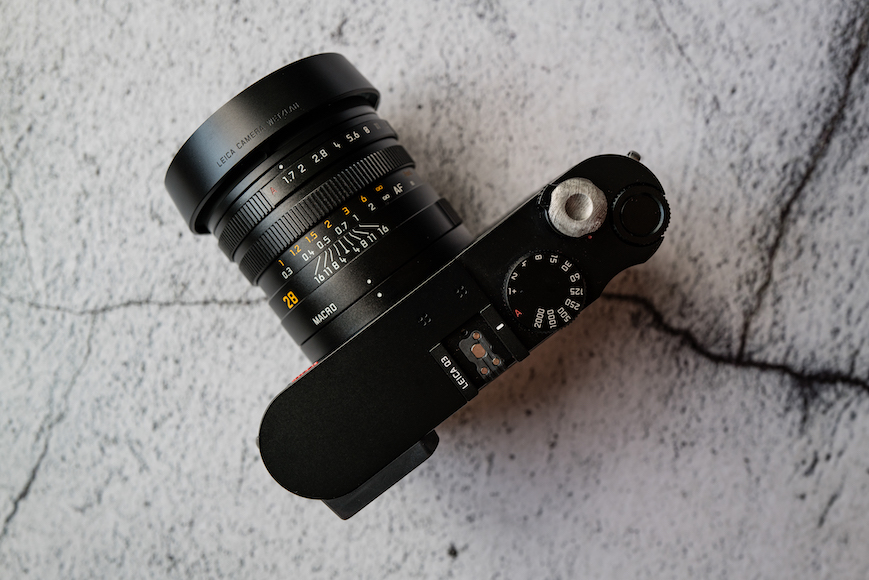

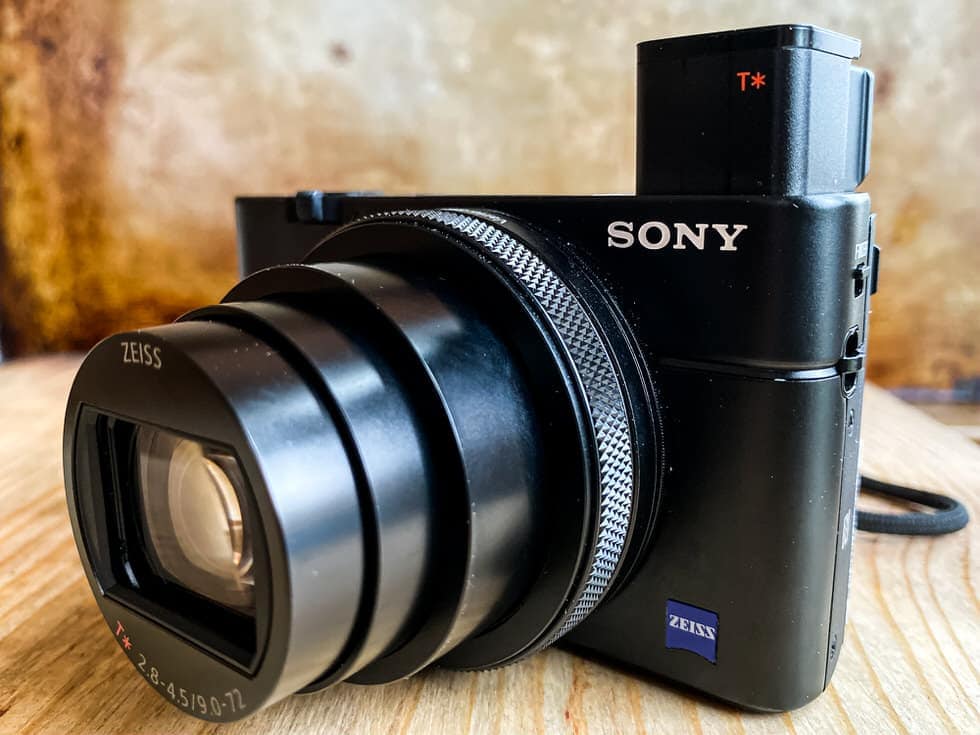

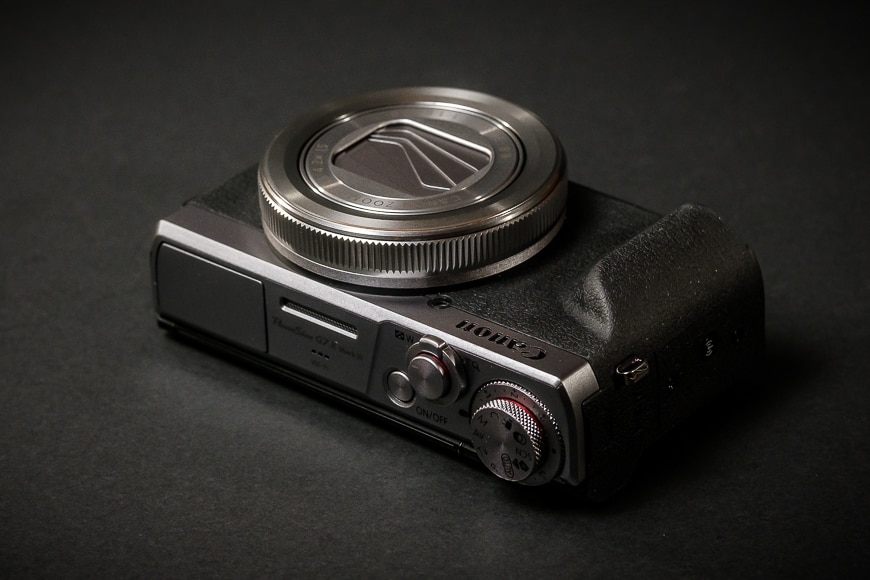
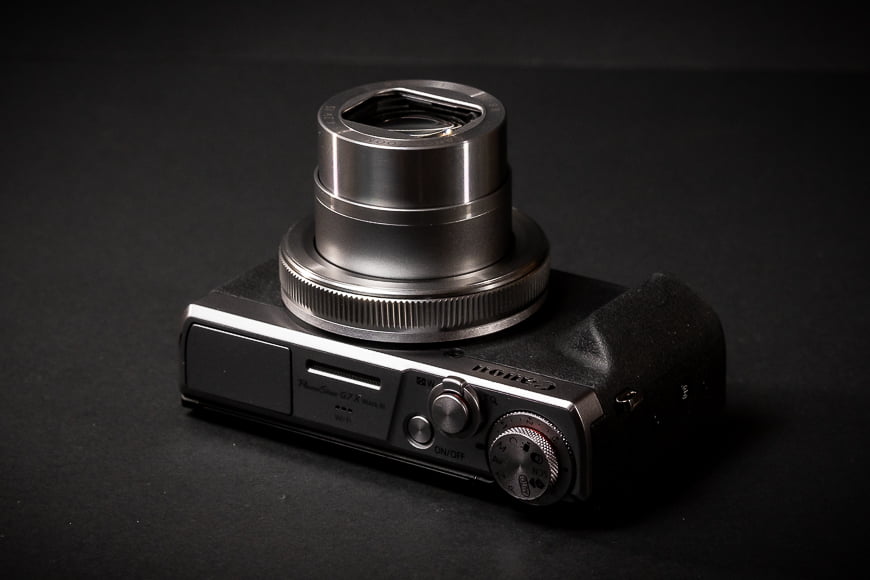

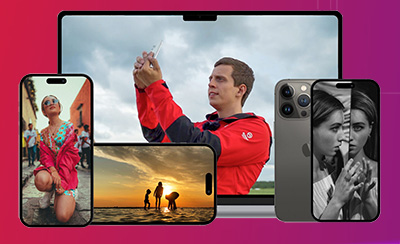
please tell me which camera is better to use to shoot video for filming the surrounding area both in a car and on a bicycle GoPro I have some doubts
Alternatives to Consider:
DJI Osmo Action: Similar to GoPro, but some prefer its color and stabilization.
360 Cameras: Cameras like the Insta360 One X2 capture the full environment and allow you to choose angles and framing in post-production.
Smartphones with Gimbals: A high-end smartphone with a gimbal (like the DJI OM series) can offer great stabilization and video quality with less fisheye distortion than action cameras.
GoPro is a solid option:
Stabilization: GoPro’s Hypersmooth stabilization is excellent for reducing shakiness, which is crucial when filming on a bike or in a car.
Mounting Options: GoPro offers a wide variety of mounts for vehicles, helmets, handlebars, etc., making it easy to attach and capture different perspectives.
Compact & Durable: The camera’s compact size and rugged design are great for outdoor environments.
Waterproof: Useful if you’re biking in varying weather conditions or shooting near water.
Possible Concerns:
Field of View (FOV): Some find the wide-angle “fisheye” effect too dramatic, though this can be adjusted in settings.
Battery Life: Continuous recording can drain the battery quickly, so spare batteries might be necessary.
Audio Quality: GoPro audio might need an external mic for better sound capture, especially when in motion.
Do the very compact cameras like the Sony and Canon have software and a processor that is programmed to fabricate or simulate areas of poor image quality like phone cameras do. Using algorithms and in-built components to compensate for the very small sensor and lens ?
Yes, very compact cameras from brands like Sony and Canon often use software and image processors to enhance image quality, much like phone cameras. Due to the small sensors and compact lenses in these cameras, manufacturers rely on sophisticated algorithms and processors to compensate for limitations in hardware.
These enhancements can include:
Noise Reduction: Small sensors typically produce more noise, especially in low light. Image processors use algorithms to reduce noise while retaining detail.
Lens Corrections: Compact lenses can introduce distortion (like barrel distortion or chromatic aberration). Built-in software automatically corrects these optical imperfections.
HDR Processing: Cameras use dynamic range compression to simulate a wider range of brightness by combining multiple exposures, improving details in shadows and highlights.
Digital Sharpening: Algorithms sharpen the image to compensate for any softness caused by small optics.
Zoom and Cropping Enhancements: Some compact cameras simulate optical zoom or improve digital zoom with intelligent cropping and interpolation algorithms.
These features are all designed to improve image quality without the need for larger sensors and lenses, much like the computational photography methods used in smartphones.
However, compact cameras generally still perform better than phones in key areas like low light or zoom
Great post, Mark. I’ll be back to bother you with more photography questions!
I just came here to read about one camera and ended up reading the whole thing! Nice job and comprehensive.
Thanks, Dennis! Glad you found it informative.
Great website.
Mark,
Great information. You have great command of English too. But, one of the captions had ‘indiscreet’ where I think you meant ‘discreet’.
Thanks for pointing that out, Rob! Very kind of you to compliment my English, too.
Hi, Just read your compact camera review. Could you please advise if the Fuji film x100V is suitable for portraits, not always indoor and abstract photos? And what is the difference between the Fuji film x100f and x100v. Many thanks.
P.s. would you consider the Leica DLux Typ(109) in this category
Hi Willow, I’ll be publishing my X100V review next week which should answer your questions ;-)
This is a great review Mark. Covers all bases.
One suggestion I have is for beginners such as myself please include as a point of comparison, maybe 1 cheap mirrorless with suitable prime lens such as Olympus OMD EM10 or Sony a5100/6400 or equivalent fuji cameras
This would be extremely useful !!!
Thanks for the suggestion Marees! Those are all great options, but they don’t fit my definition of ‘compact camera’ for this article, as they don’t have fixed lenses. If I were to add small interchangeable lens cameras into the mix, things would start to get a bit confusing. Maybe I need a separate article for that… you’ve got me thinking!
Great article! For me, the key to beating a smartphone is having a camera with you all the time (ie: pocketable).
I’ve been using the fuji XF10 (with latest firmware), it’s pocketable, has a 24mp aps-c sensor and superb image quality all for under £450 – should replace the g7x 2 as the best budget camera!
It’s definitely a great camera, Baz!
A highly addictive post! I read it all. Just a couple of typos I noticed. In one of the large quotes “mirrorless” has 3 “r”s in it. (Yeah I know, very hard to spot!) And in the Ricoh review it says “but once you see it, it’s hard not to noticed it again”. The word you meant was “notice” :-)
Sorry to nitpick. Great post as I said!
Thanks Chris, I really appreciate that! Feel free to proof read all the other posts too :p Thanks also for reading every word!
If I was going to pay that much for a camera, I would buy a “real” camera not a point and shoot.
These cameras are great cameras, Randy, trust me! Definitely not your average point and shoot – they have sensors and features that can keep up with anything you consider ‘real’.
Fantastic blog article seriously, very well written and great analysis, I am super tempted with the Ricoh, and I would love to shell a Leica Q2 and brag around..the problem with leicas is they are like a bit like Aston martins beautiful fragile And seductive objects.!
Thanks Jose, I appreciate you reading it all! I agree about the Leicas ;-)
Great informative post on the best compact point and shoot camera to choose.
A camera is an important investment to make and with this information makes the decision easier. Thanks for covering all the details. ? Pinned for later use.
Regards
SB
Thanks Steve. Good luck with your site – looks like some decent content coming along there :-)
Great post.
I just picked up the Q2 and I read a ton of reviews like these. This was the best one.
So glad it helped you, Marc. How are you liking the A2?
Nice one! Small point: leica is not unique in having digital zoom, ie in camera crops. So does fuji x100f (50 and 70mm), and shows zoomed in evf. I love my x100, s,t and f , bring it everywhere. Indeed magnificent jpgs. I hardly need to do any post. Best!
Hey Justus, yep am aware of that :-) Leica’s way of doing it with the Q2 is unique, though, with the viewfinder grid changing to 35mm, 50mm and 75mm. Cheers
Hi shotkit,
A good camera is essential if you want to take good pictures, especially for travellers, Laurence and Jessica. These are some great suggestions and I’ll have to consider which one from these to take and use in my travels!
Thanks! Who’s Laurence and Jessica?!
I was looking for features the basic compact cameras and this helped a lot.
Thanks for the insightful article.
Sure thing, Nowshad :-)
Not sure if it fits in your classification as compact, but I like my Panasonic Lumix GX85. Although one can change lenses, it is perfectly possible just attach a travel zoom like 14-140 mm, while keeping a good prime in your ‘back-pocket’ like 20 mm/1.7 just in case.
Ah yes, that’s a great camera too! Thanks for the comment
What do you think about this cam https://youtu.be/Nn5D8aBhjnE
It’s pretty good! Some better ones in this list though
Obvious omissions: Sigma Merrills, Leica Q, Olympus PEN, and Canon G7Mk2 (which has got the missing lens you were mentioning in the G1)
Eh eh! I did it (My camera store have patiently welcomed me a lot of hours) and I reached the folowing conclusions :
– Intellectually and technically, the Canon is appropriate because it fits well in hands, looks like a “mini DSLR”, it runs like my DLSR, it has an usable zoom, It can be put in one of the pocket of any vest and is a little bit weather sealed. But it eats battery, the lens seems to hop toward the subjects (you’ll be caught to take a picture and people will “freeze”), it’s a little heavy and it asks for light (or high iso).
– Emotionally and technically, the Fuji is the good one because it’s damn appealing, it fits correctly in hands, it offers plenty of new fields of photography (flash at 1/1000 or more, max shutter a 1/32000, …), it offers a good apperture, it has a optical and electronic viewfinder, it can be put in one of the pocket of any vest… But it’s a bit heavy and 50mm or 28mm add ons need even more money.
– Logically the Ricoh is the better because it’s far cheaper and offers a large sensor for a tiny volume (it fits in any pocket except my Lewis 505 ones), it fits in hands… But it’s very little and rather ugly, shooting everything at an equivalent of 28mm may quickly be boring and can quickly creates weird perspectives if you don’t take care, especially with portraits.
So, stalemate!
No one is “perfect” and all need renunciations.
Even if I eliminate the GR (well, even it’s not a good reason, it’s not “sexy”, configuration is an adventure and I’ll miss a viewfinder), both others will give good pictures (depending on your attention to their limitations : don’t even try to use wide aperture at mechanical 1/4000 with the F100 or shoot too close to the lens, and pray you won’t have too much pictures to take or a bright sun needing to exceed 1/2000 speed at 100 ISO with the Canon). Stalemate even on the limitations :(
As you wrote, you can hook a x100 (I prefer the silver) in your living room : it rocks! On the other hand, the Canon looks like a concentration of high technology : it’s rather hype. But these are BAD motivations :)
Tough choice did you say? “Impossible” could be a better word. It’s the first time I consider to draw the short straw!
I eventually ended up with the X100F… And until now, I’m happy with it :)
Great choice Georges!
Yee-haw: it’s me :)
Well, after reading your article (great again), I’m puzzled: I went to the same conclusions than you. GRII, X100F or G1XM3 are THE compact cameras (Sony F100 is great but so tiny and its menus so weird I’ll not dare to take my chance with it)
– GR2 : not expensive (well, say I can easily afford it) but living an impression of ‘not finished’ which drive to wait for the GR3
– X100F: awesome look (reminds me my first rangefinder), super-duper pictures, heavy-duty
– GX1M3: versatile (it even has the weather sealing, whatever how effective it can be), articulated screen, very good picture but deceiving low light abilities.
Since I’m a Canon user for decades, the last seems perfect… Nevertheless, the X100F is trying to pick me up :)
Some advices?
haha tough choice isn’t it! All my advice is in this article Georges, so I’d recommend picking up each camera and seeing which one feels the best in your hands.
Congrats for your website. That’s a good selection of cameras. However you mixed up a few things… Ricoh gr ii is not CCD 10mp sensor and the lens is not equivalent to 28 2.4 – you transcripted the wrong camera details. Cheers
Thanks for catching those typos Alex – all fixed now.
Thanks for the interesting reviews above. I would like a pocket camera that will take the best quality street photos possible. I am not concerned about video capability or camera age. If you had to pick just one could you say what it would be?
If you mean a discreet camera for street photography, the Ricoh GRII is most popular and a great price.
the Sony a5000 and 5100 are the same size as some of these and are amazing
Hi, can you tell me if you revommend the Nikon B500 over the L830 since its newer? Amazon is recommending the newer one. Thank you! I appreciate the article alot!
Do you mean the Nikon D500 Bethany?If so, I do recommend it!
With professionals and hobbyists leaning toward DSLRs and mirrorless cameras I wonder how many people are still buying point-and-shoots when phones have 16MP cameras in them. What do you think about the point-and-shoot market in the world of smartphones with large megapixel cameras?
The market is definitely getting smaller and the compact camera manufacturers will need to keep innovating to keep up with mobile phones. However, for low light photography, a good compact camera will still always outperform a mobile.
Great post. Full of fantastic information. Thanks for sharing
Thanks for your overview.
Kinda interesting that you’ve mentioned 3 super zooms, only one super compact, only one low light capable and one gimmicky android camera.
Maybe it would be a good idea to devide this article into a few articles or captions that consider each form factor/usability.
Kinda disappointing that there is no other compact / ultra compact mentioned or any other low light or even rugged camera for everyday use (some new waterproof cameras etc).
My impression from reading this article is that even you’ve not mentioned it in your conclusion the sx700 may be the best all-rounder. But it lacks raw format, so maybe you’re missing one or two cameras…
Thanks for the comment Benni! I’ll take your thoughts into consideration next time.
Hello.
Nice write up of the g16. What was the reason choosing this over the G7X when looking for a compact?
Thank you,
Stefan
Hey Stefan. The G7X is another great camera which I almost included on this list, but it’s pushing into entry level dSLR pricing. If you can afford it, I’d definitely recommend it.